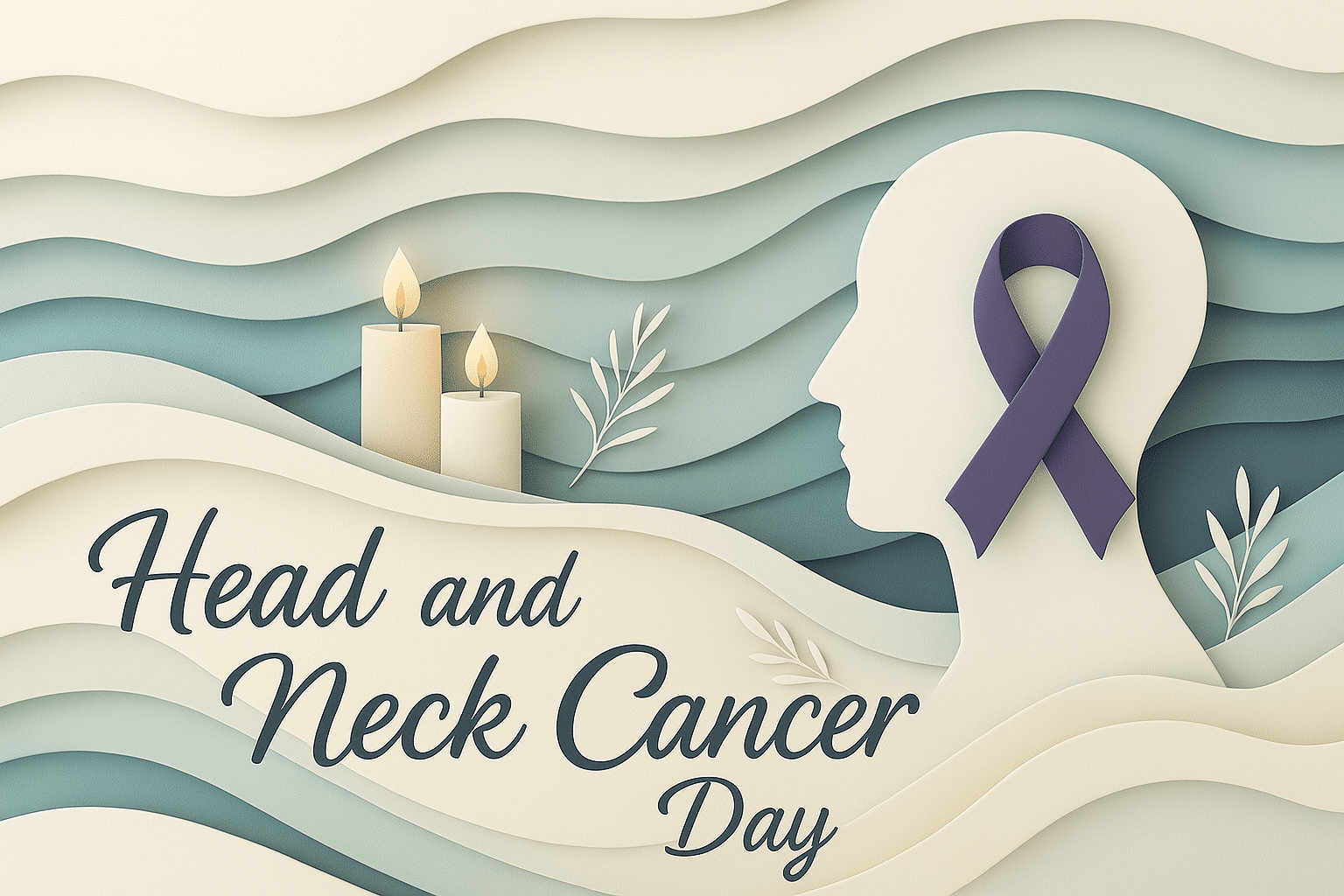What is World Head and Neck Cancer Day?
World Head and Neck Cancer Day is held every year on July 27 and is observed worldwide. This day focuses on raising awareness about cancers that affect the mouth, throat, voice box, nasal cavity, and other areas in the head and neck region. These cancers are often overlooked and diagnosed late, making early detection a critical goal of this day. It serves as a platform for education, prevention, and support. The day also aims to highlight risk factors such as tobacco, alcohol, and human papillomavirus (HPV) infection.
Doctors, survivors, and advocacy groups use this day to share vital information and personal experiences. Events range from screenings and lectures to online campaigns and memorials. The day reminds people to look for symptoms like mouth sores, voice changes, and difficulty swallowing. By increasing knowledge, it seeks to save lives. World Head and Neck Cancer Day is a call to action and a show of global solidarity.
History and Origin
World Head and Neck Cancer Day was established in 2014 by the International Federation of Head and Neck Oncology Societies (IFHNOS). The decision was made during their fifth World Congress held in New York. The purpose was to bring more attention to a group of cancers that often go unnoticed. With growing concern over late-stage diagnoses and preventable deaths, the organization created this day to mobilize the global medical community and general public. The first observance set the tone for a yearly tradition of education and outreach.
Since its founding, the day has gained support from hospitals, cancer organizations, and research institutions worldwide. Many countries now organize national campaigns around the day. IFHNOS provides toolkits and resources to help spread accurate information. Conferences, workshops, and survivor stories are all part of the growing movement. Each year builds on the last, increasing visibility and impact.
World Head and Neck Cancer Day is not just about awareness—it also drives change. The day encourages better screening programs, faster referrals, and funding for research. It has led to new partnerships between governments and health groups. For patients and families, it provides a sense of community and acknowledgment. The goal remains clear: reduce suffering through knowledge, early action, and shared commitment.
Who Participates in World Head and Neck Cancer Day?
- Healthcare professionals: Organize screenings, educational talks, and public outreach to inform communities about symptoms and prevention.
- Cancer organizations: Lead campaigns, offer support services, and raise funds for treatment and research initiatives.
- Survivors and patients: Share stories of resilience and help others understand the importance of early detection.
- Medical researchers: Present findings and advocate for more investment in targeted therapies and diagnostics.
- General public: Participate in awareness walks, online discussions, or by simply learning more about the issue.
Slogans and Themes
Common slogans for the day include “Early Detection Saves Lives,” “Know the Signs,” and “Listen to Your Body.” Each year may feature a specific theme, often chosen by IFHNOS, that reflects emerging priorities in prevention and care. Themes focus on public education, screening access, or reducing stigma. The aim is to keep the message simple, direct, and actionable. These slogans help unify campaigns around the world and give people a clear reason to pay attention.
Colors, Symbols and Patterns
Colors:
- Burgundy and ivory: These colors are used together to symbolize awareness for head and neck cancers. They appear in ribbons, posters, and digital banners.
- Dark gray: Sometimes used to represent throat cancer awareness, often paired with the official ribbon.
- White: Used for clean design and clarity in medical visuals, especially in infographics.
Symbols:
- Burgundy and ivory ribbon: This is the official awareness symbol for head and neck cancers.
- Anatomical illustrations: Diagrams of the head and neck are used in educational materials.
- Speech bubble icons: Represent communication and voice, common areas affected by these cancers.
Patterns:
- Infographic grids: Designed to show symptoms, risk factors, and treatments in a clear layout.
- Layered overlays: Used in digital campaigns to highlight patient voices alongside facts.
- Simple facial outlines: Often appear in logos and posters to focus attention on affected regions.
Most Used Hashtags
- #WorldHeadAndNeckCancerDay
- #HeadAndNeckCancerAwareness
- #EarlyDetection
- #CancerPrevention
- #IFHNOS
How to Celebrate World Head and Neck Cancer Day
- Attend an awareness event: Look for local or online seminars, screenings, or lectures hosted by medical centers.
- Get screened: If you are at risk or have symptoms, take advantage of free or low-cost screenings.
- Share stories and facts: Use social media to talk about personal experiences or educate others with reliable information.
- Support cancer organizations: Donate to or volunteer with groups that fund research or assist patients.
- Talk to your doctor: Ask about warning signs, lifestyle changes, and steps you can take to reduce your risk.
Why Is World Head and Neck Cancer Day Important?
This day is important because it brings attention to a group of cancers that are often silent until it is too late. Raising awareness helps people recognize symptoms early, which can make a major difference in treatment success. The day also highlights the emotional and physical challenges faced by patients and survivors. It offers a moment of support, education, and collective strength. By focusing on prevention and action, the day saves lives and reduces suffering.
It also creates space for important conversations about access to care and public health messaging. In many regions, stigma or lack of information still prevents people from seeking help. This day breaks that silence and replaces it with understanding. It empowers families, caregivers, and health workers to work together. World Head and Neck Cancer Day is not just about awareness, it is about impact, empathy, and change.
Features
July 27: Head and Neck Cancer Day
Why do you keep falling for the same type?
Read the article Lovemaps: the hidden blueprint of our love.

